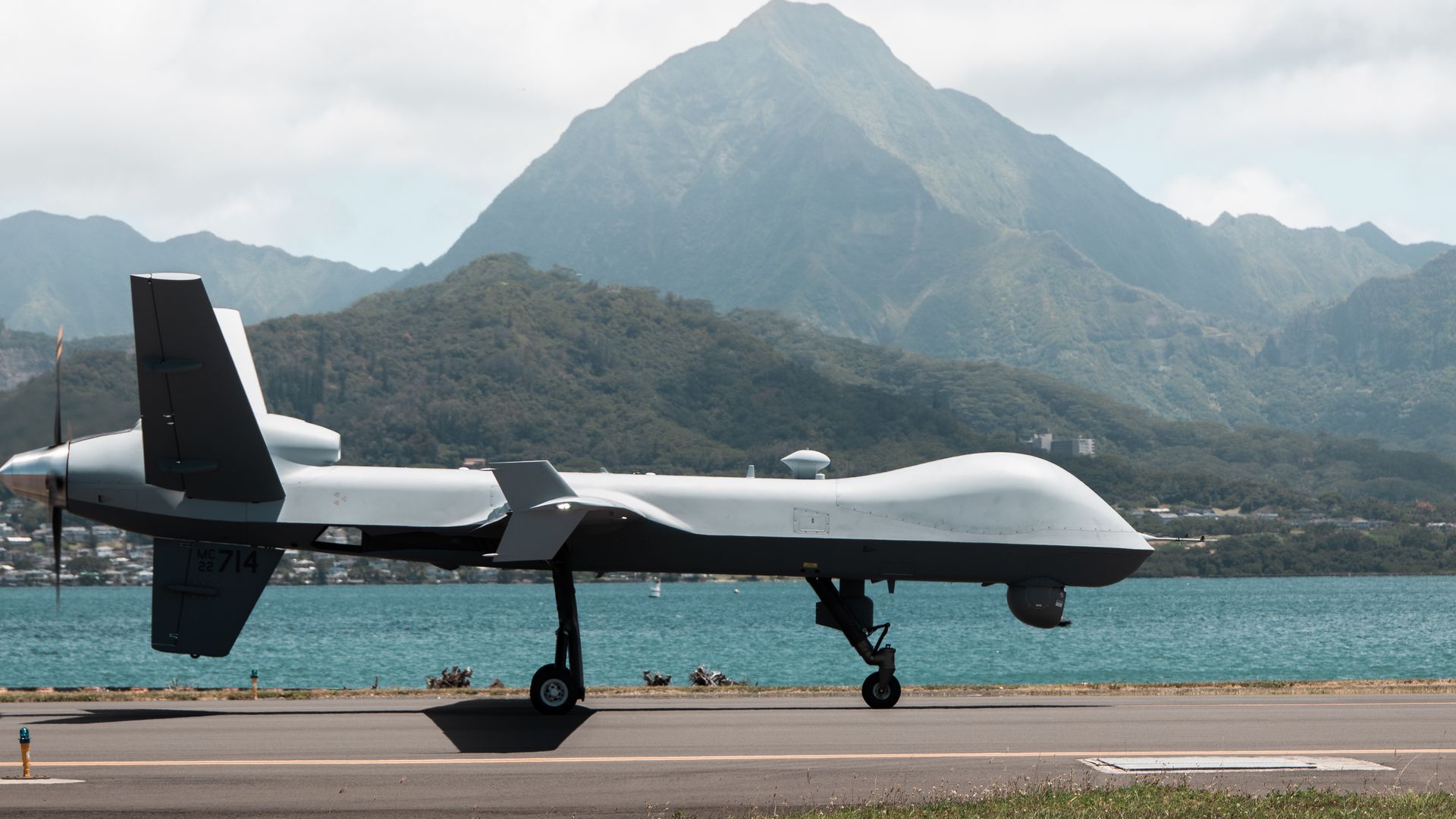
THE UNITED STATES MARINE CORPS TRAINED ITS 100TH MQ-9 REAPER DRONE PILOT. THE MILESTONE MARKS THE LATEST SHIFT UNDER THE CORPS’ FORCE DESIGN 2030 PLAN, WHICH AIMS TO REOPTIMIZE THE BRANCH FOR A POTENTIAL DUST UP WITH CHINA.
IT WAS ONLY IN 2020 THAT THE CORPS EVEN CREATED A REAPER OCCUPATIONAL SPECIALTY, AND 2022’S TRAINING NUMBERS FELL WELL SHORT OF EXPECTATIONS. SO, THE FACT THERE ARE NOW 100 MARINE OFFICERS TRAINED TO FLY REAPERS IS DEFINITELY A FEAT WORTH MENTIONING.
AFTER LEASING A FEW TO MAKE SURE THEY’D WORK FOR THE CORPS–
THE USMC BOUGHT ITS FIRST REAPERS IN 2020. THE MQ-9 REPRESENTS THE FIRST GROUP 5 DRONE OPERATED BY THE CORPS.
DRONE CATEGORIES BREAK DOWN THE CRAFT BY SIZE AND OPERATIONAL LIMITS. GROUP FIVE DRONES WEIGH MORE THAN 1,320 POUNDS AND FLY AT ALTITUDES HIGHER THAN 18,000 FEET.
THERE ARE THREE MARINE CORPS UNITS CURRENTLY FLYING REAPERS. ONE IS HEADQUARTERED IN ARIZONA AND OPERATES THE DRONES FOR U.S. CENTRAL COMMAND.
THERE’S AN AVIATION TESTING UNIT IN MARYLAND, AND MARINE UNMANNED AERIAL VEHICLE SQUADRON 3, OR VMU-3, IS LOCATED AT AN AIR STATION IN HAWAII.
IN AUGUST, THE MARINES IN VMU-3, CALLED THE PHANTOMS, UNVEILED THEIR LATEST REAPER VARIANT, THE MQ-9A MUX/MALE, WHICH WILL BE USED TO PROVIDE INTELLIGENCE, SURVEILLANCE AND RECONNAISSANCE, OR ISR, TO THE 3RD MARINE LITTORAL REGIMENT.
REAPERS ARE PRIMARILY USED FOR INTELLIGENCE GATHERING AND NOT NECESSARILY FOR OFFENSIVE PURPOSES. BUTKNOWING WHERE AN ENEMY IS, WHAT THEY’RE PACKING AND WHERE THEY’RE GOING ARE THE KIND OF DETAILS THAT INCREASE LETHALITY.
REAPERS WERE ORIGINALLY DESIGNED TO TAKE OFF FROM PAVED RUNWAYS, BUT THE AIR FORCE LANDED ONE ON A DIRT STRIP LAST YEAR. SO, IT’S NOW SAFE TO SAY THE DRONE CAN OPERATE FROM MORE AUSTERE LOCATIONS AS WELL. LIKE SMALL ISLANDS IN THE MIDDLE OF THE PACIFIC.
IN ADDITION TO THE MARINES, THE US NAVY AND AIR FORCE ARE ALSO ADAPTING FOR A FUTURE CONFLICT WITH CHINA, WHICH INCLUDES DISTRIBUTING FORCES INTO DECENTRALIZED LOCATIONS AND PREPARING FOR THE EMERGENCE OF EVEN MORE UNMANNED AERIAL SYSTEMS ON THE BATTLEFIELD.
THE DEPARTMENT OF DEFENSE IS WORKING THROUGH SEVERAL INITIATIVES TO DEVELOP MILITARY DRONES ON AN INDUSTRIAL SCALE, WHILE AT THE SAME TIME, TRAINING TOMORROW’S SOLDIERS TO COUNTER THE THREAT AS WELL.
AT FORT SILL IN LAWTON, OKLAHOMA THE DOD CREATED THE JOINT COUNTER-SMALL UNMANNED AIRCRAFT SYSTEMS UNIVERSITY WHICH WILL TEACH WAR-FIGHTERS FROM MULTIPLE SERVICE BRANCHES THE LATEST TECHNIQUES TO DETECT, TRACK, AND DESTROY DRONES.







